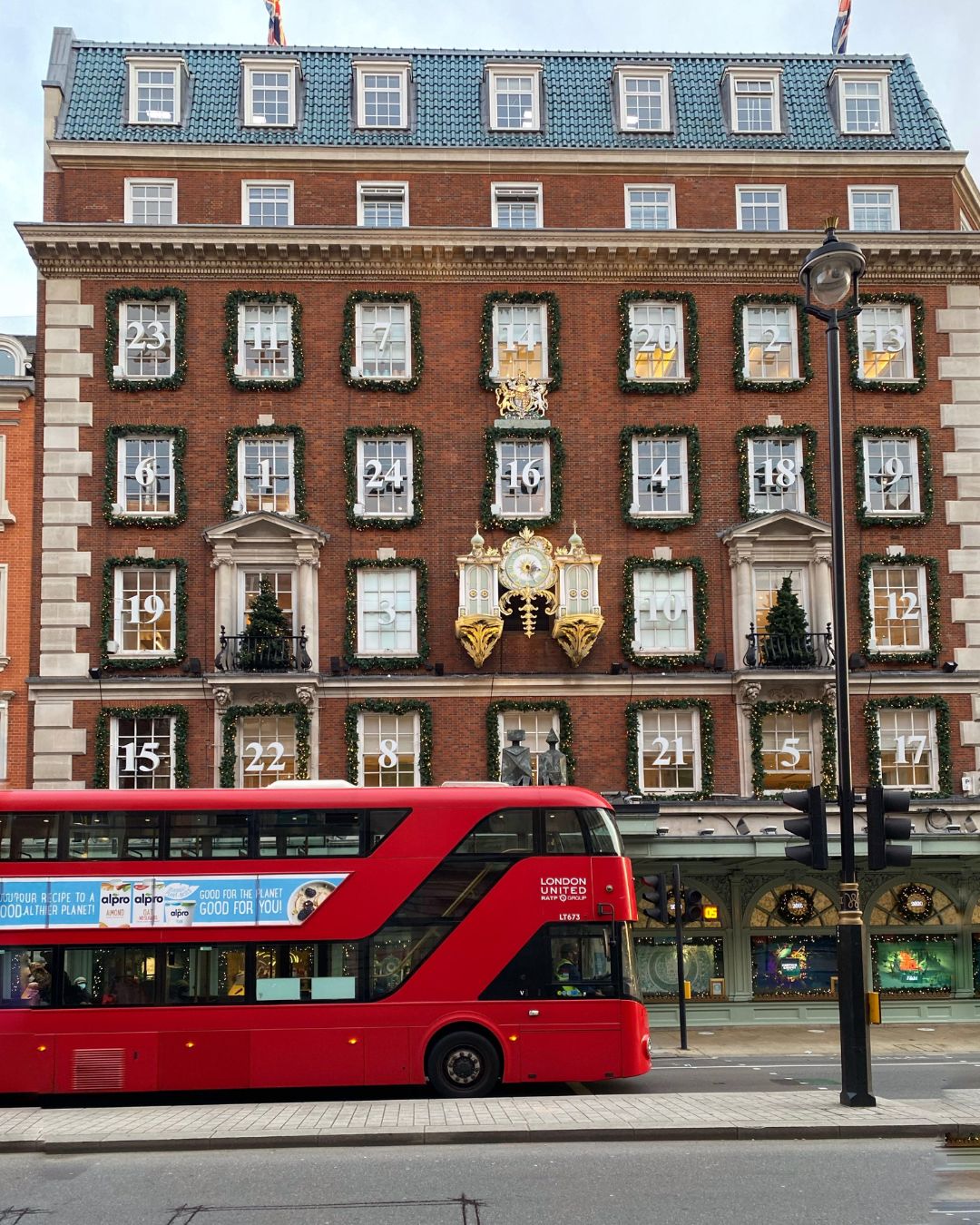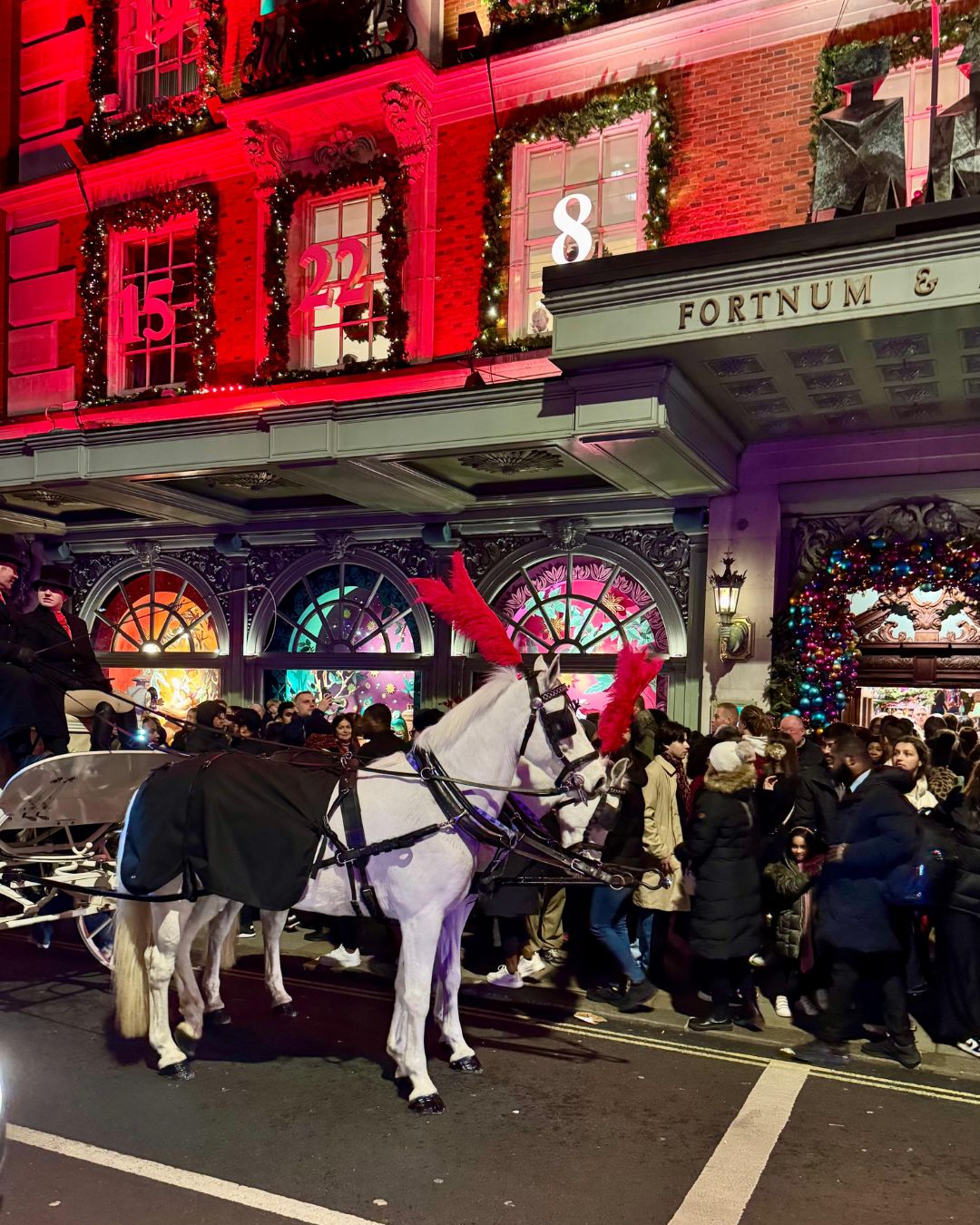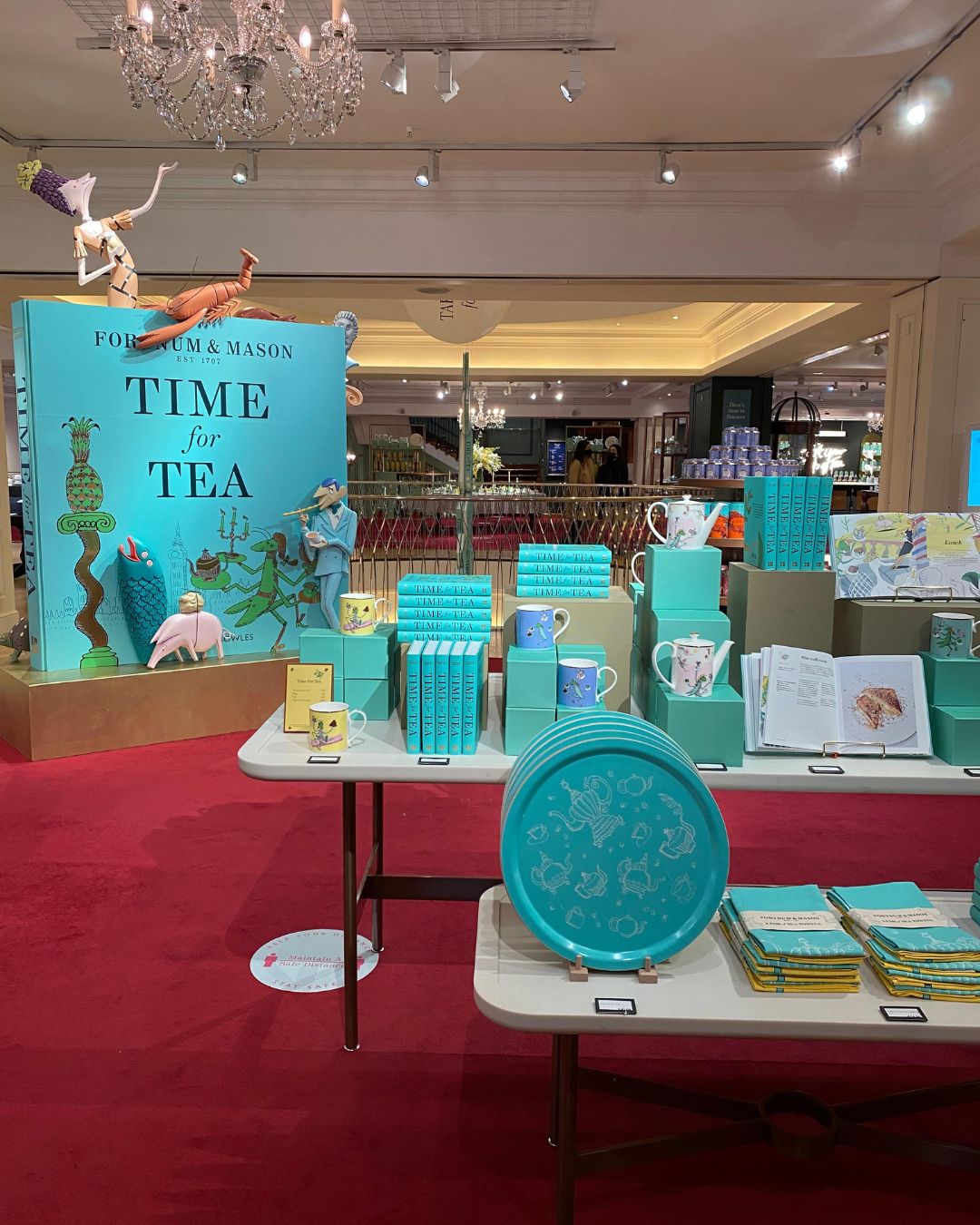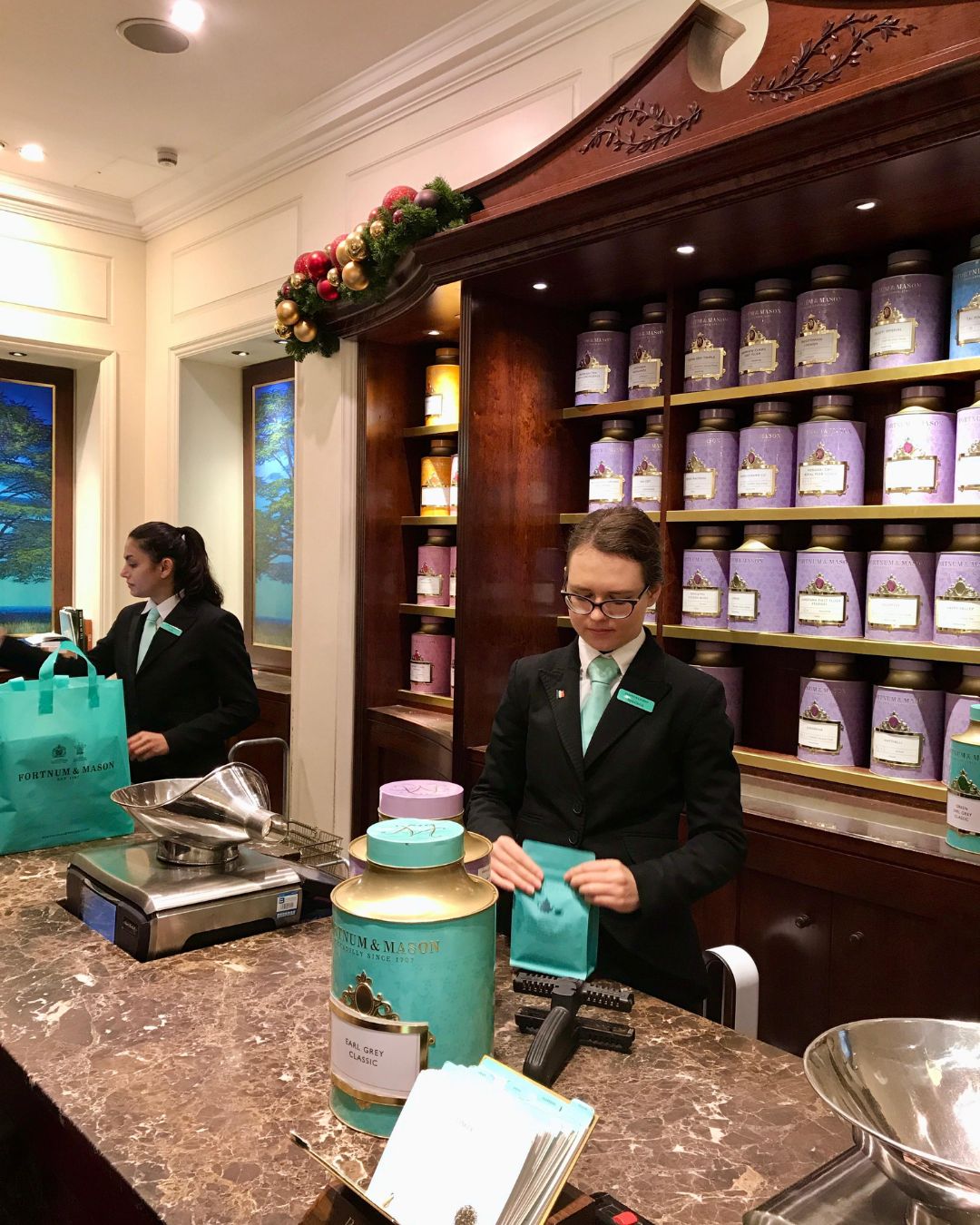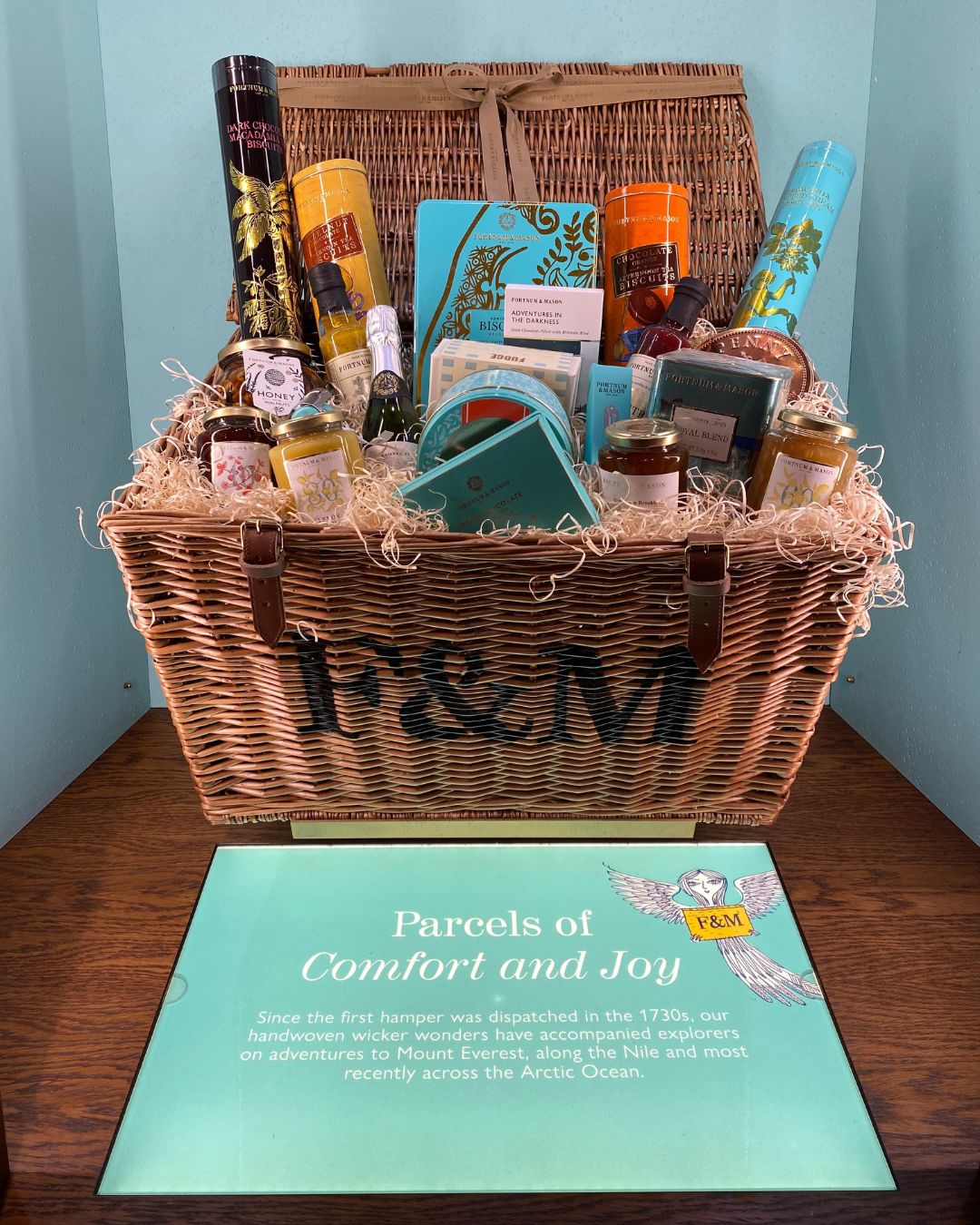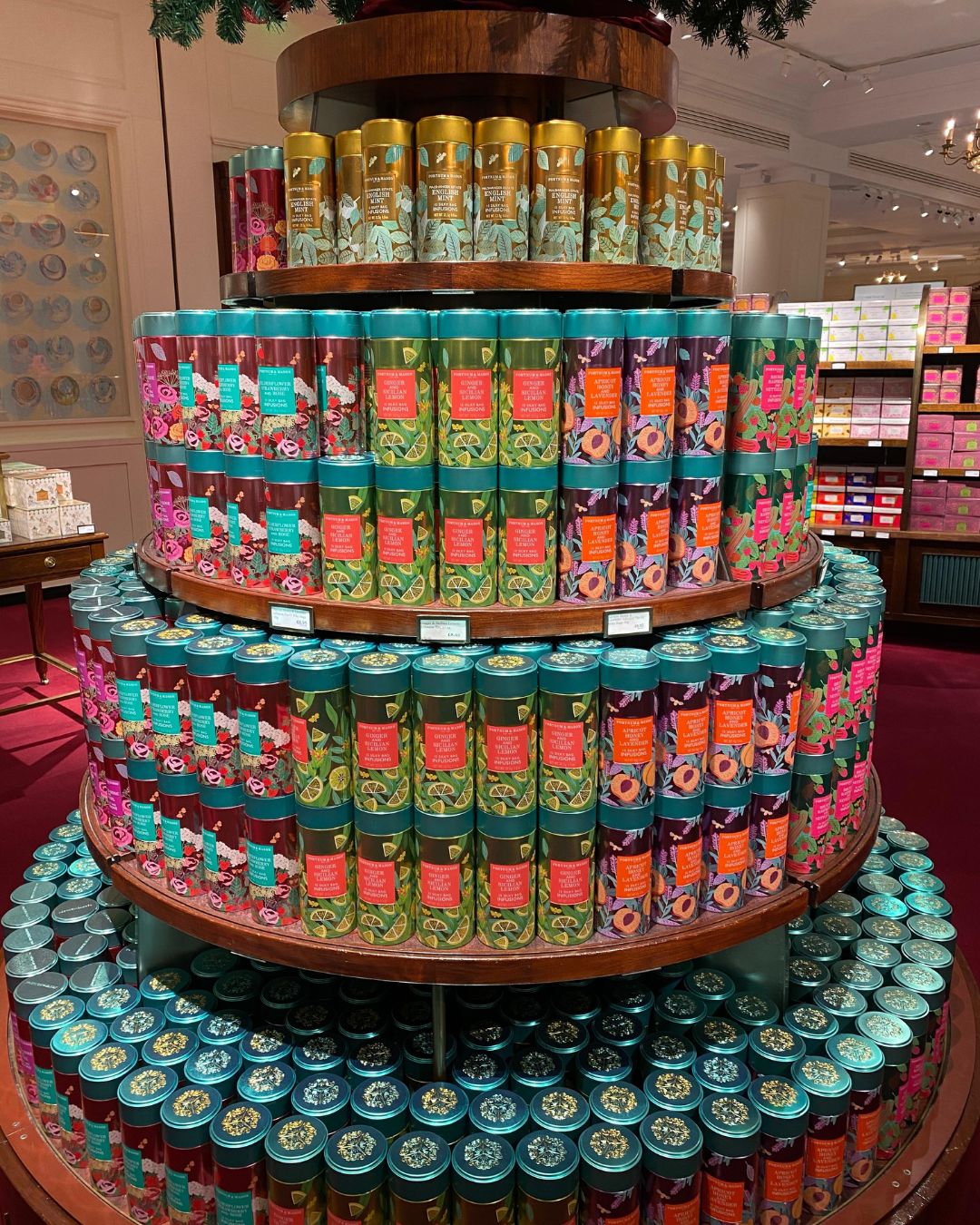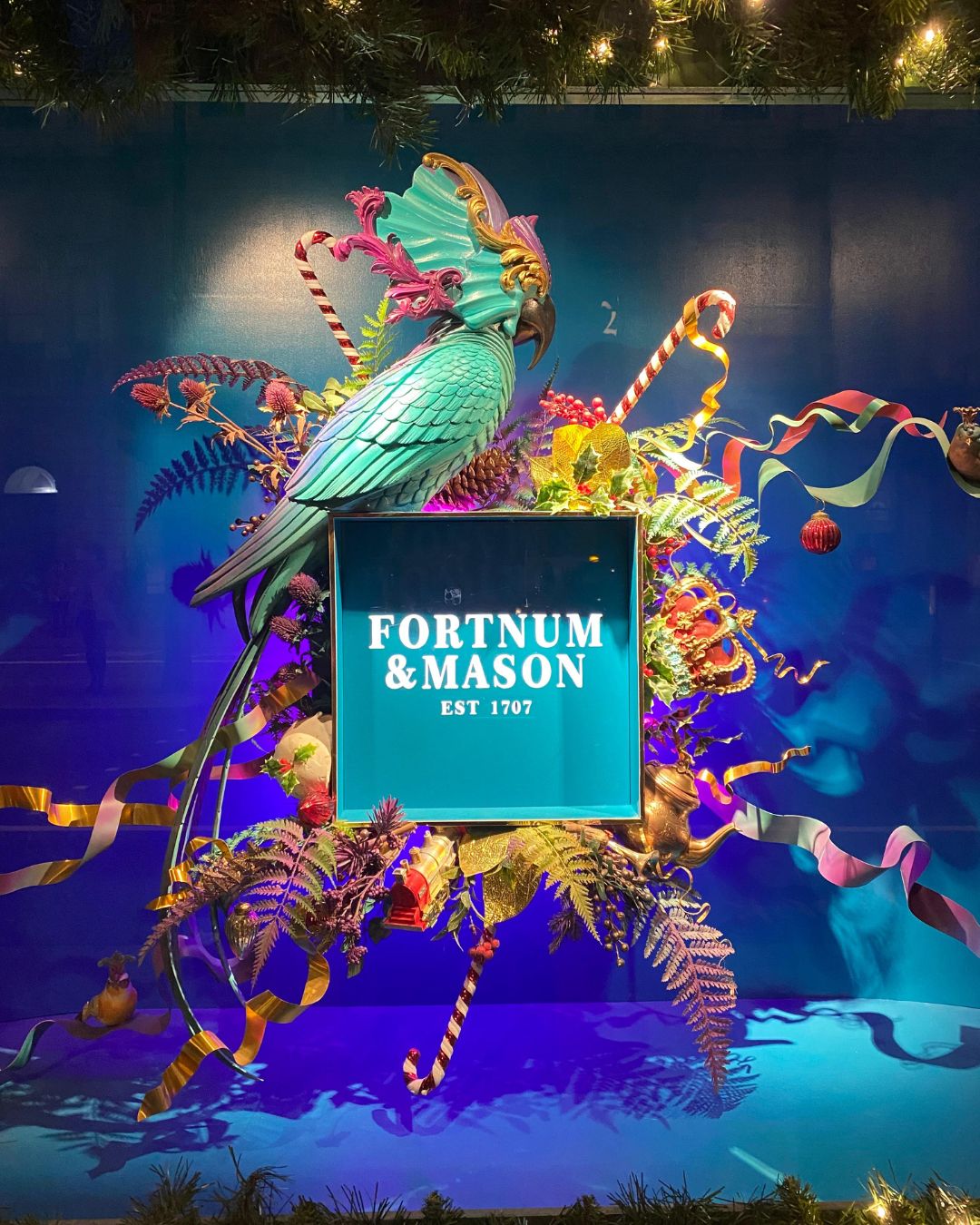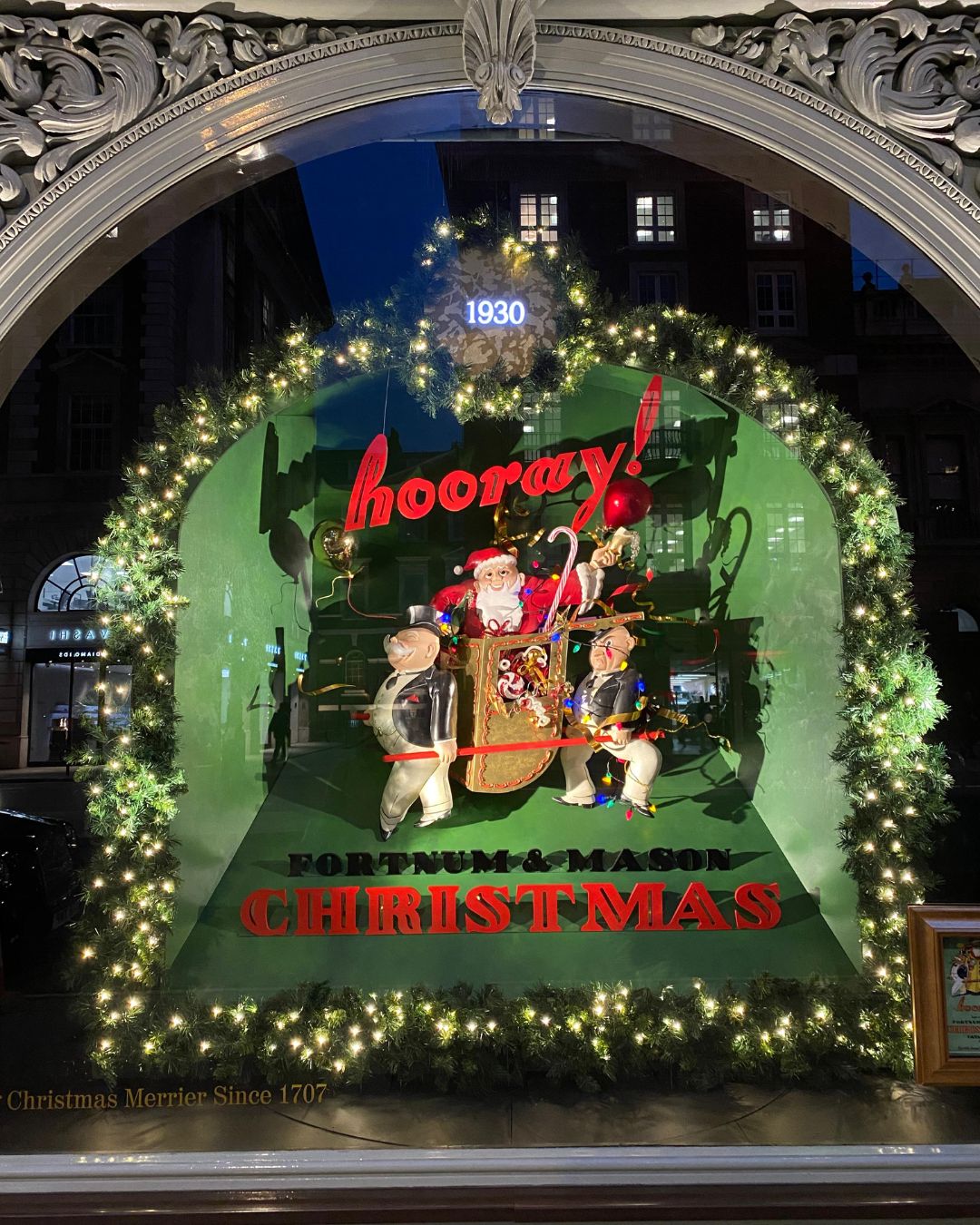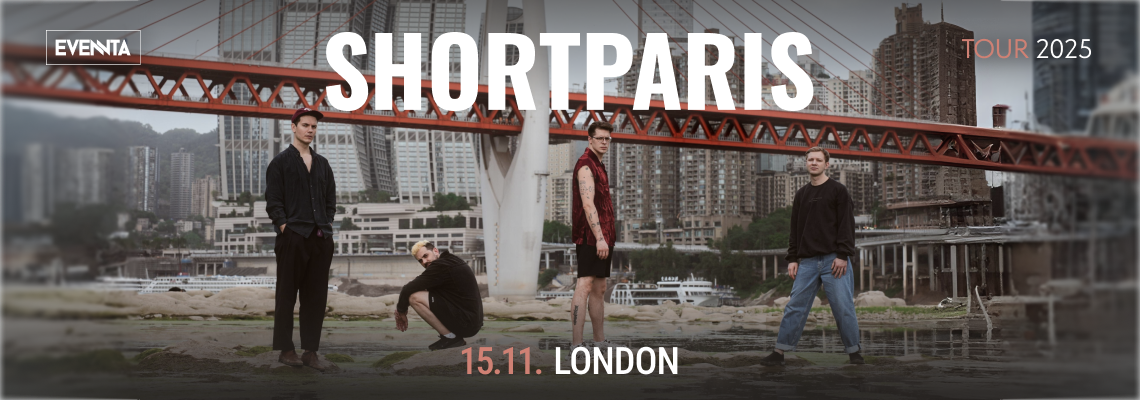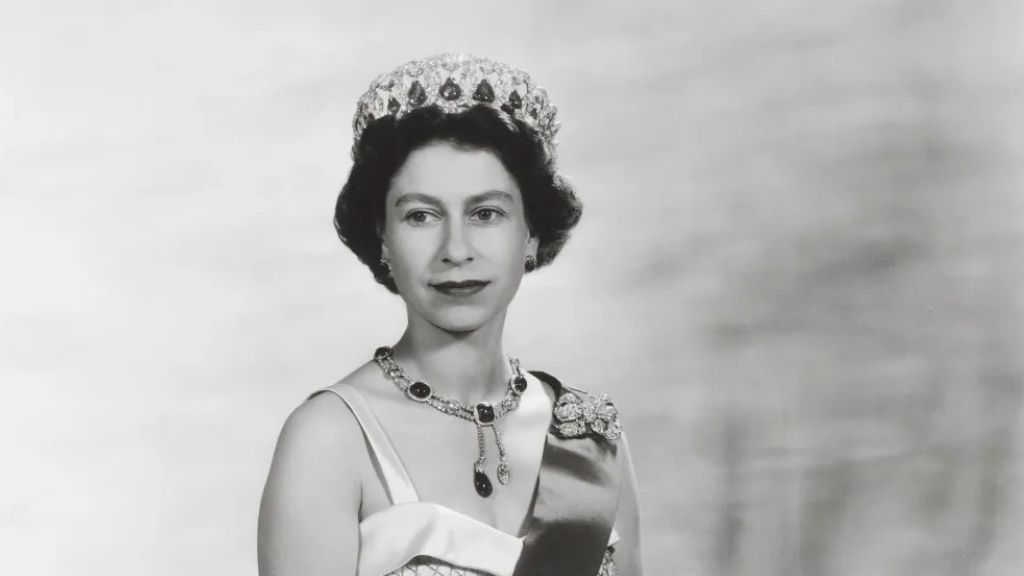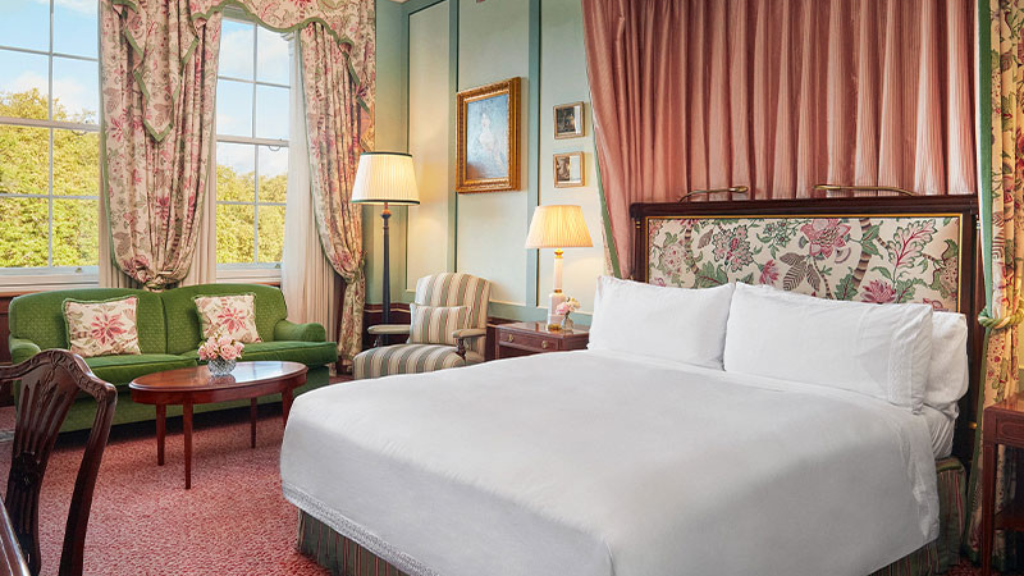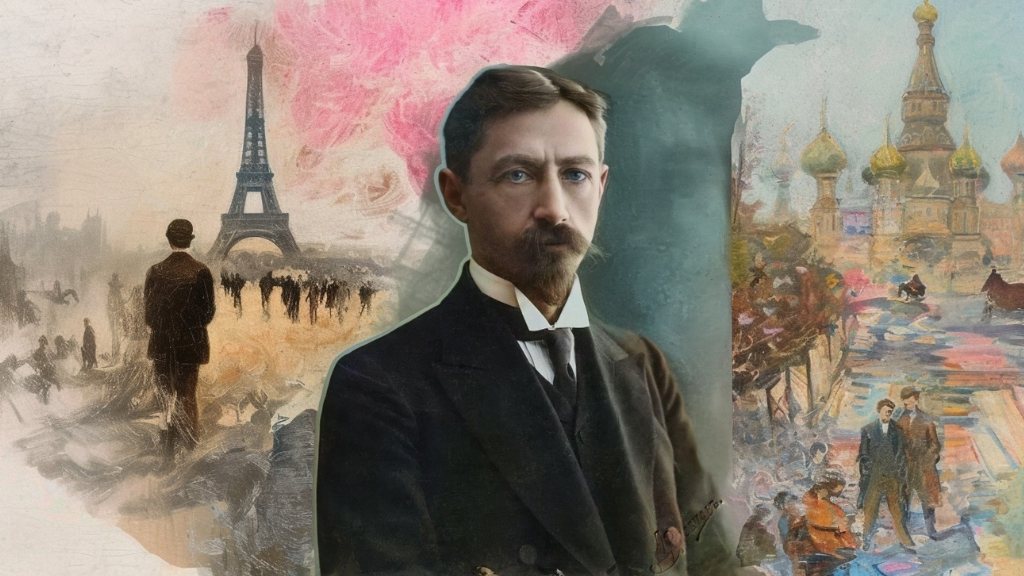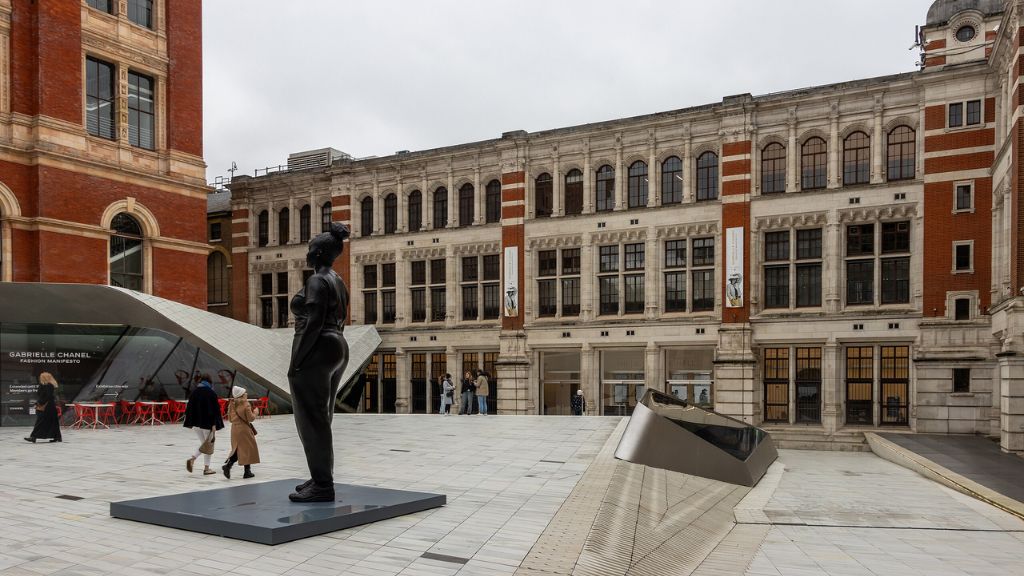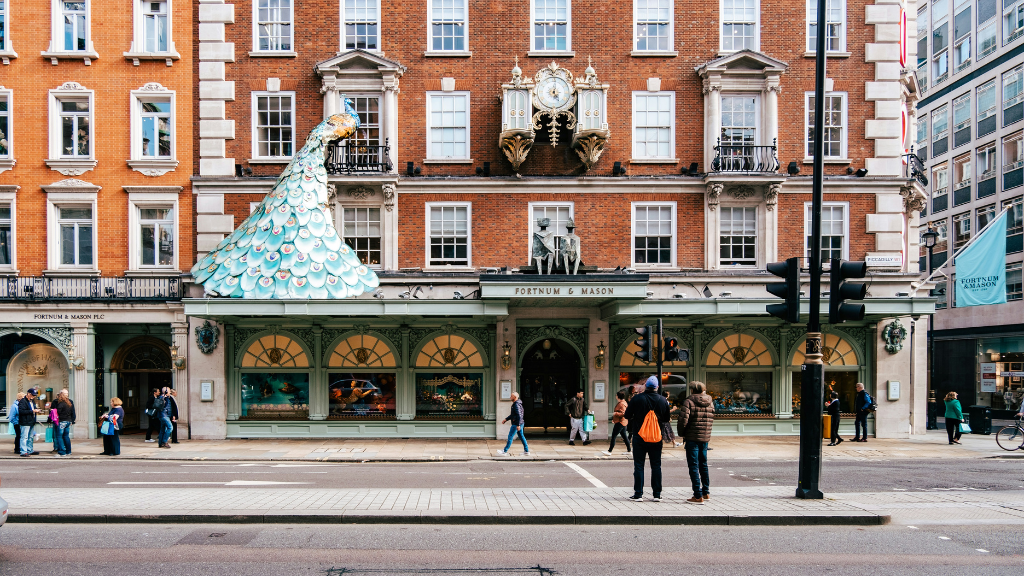
Fortnum & Mason: how the queen’s footman created London’s legendary emporium
The legendary department store Fortnum & Mason on Piccadilly is not merely the flagship of this prestigious street but an icon of the British capital itself. Founded in 1707, it remains a symbol of elegance, taste and tradition — as well as a magnet for travellers: here, one discovers the delicacies and delightful gifts in which the essence of Britain resides. Afisha.London magazine recounts how Fortnum & Mason has preserved its legendary status while staying modern, never compromising its heritage.
This article is also available in Russian here
The story of a legend: from the queen’s candles to an empire of fine foods
Fortnum & Mason came into being at the dawn of the eighteenth century thanks to William Fortnum — a footman at the court of Queen Anne — and his landlord neighbour, Hugh Mason. The story of the store’s founding is a true testament to British enterprise. At court, every evening fresh candles were lit — a whim of Queen Anne, who cherished order and splendour.
Observant Fortnum devised a way to use the leftover wax: he gathered the scraps and resold them, turning a side venture into a profitable endeavour. By 1707 his earnings allowed him to leave royal service and, together with Mason, open a shop — thus began the tale of one of Britain’s most celebrated stores, a symbol of taste, ingenuity and style.
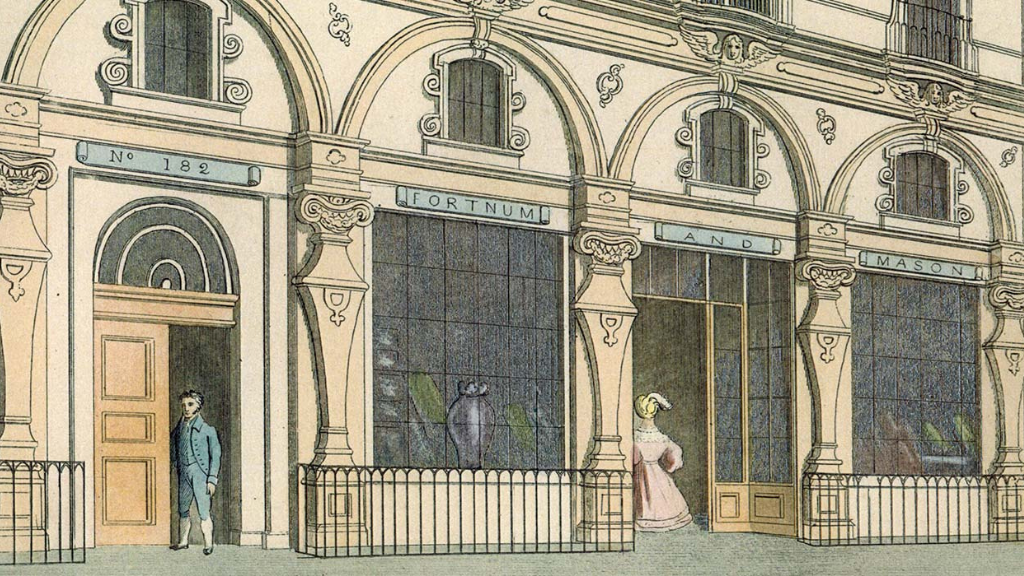
Photo: © Fortnum & Mason 2025
By 1761 Fortnum’s grandson, Charles, entered the service of Queen Charlotte, strengthening the store’s connection to the court and giving its business a new impetus. The shop began specialising in delicacies and prepared dishes — such as aspic made of game, which became a legend of its era.
The famous clock
In 1964 the Canadian businessman Garfield Weston, who had acquired the shop in the post-war years, commissioned a four-ton clock in honour of the founders. Every hour, the nearly one-and-a-half-metre figures of William Fortnum and Hugh Mason emerge from the clock and bow to one another under the chime of 18 bells — cast at the same foundry as Big Ben’s bells. Every fifteen minutes a piece of eighteenth-century music plays, and in winter you may hear the strains of Tchaikovsky’s Nutcracker. During the festive season crowds of tourists and bloggers gather at the chime of the clock and the gleaming façade of Fortnum & Mason — so popular that traffic on Piccadilly comes to a brief halt.
Royal warrant holder
Fortnum & Mason has for more than a century held Royal Warrants — the royal charters awarded to companies supplying the British court. Holders of this status are entitled to use the royal arms and the inscription “By appointment to His Majesty the King” on their packaging. It is a mark of exceptional quality, trust and a deep-rooted connection to British tradition.
The first warrant was issued to Fortnum’s in 1898 by Queen Victoria, approving the store as supplier of oils and fine foods. With the exception of a short post-war hiatus under King George VI, Fortnum’s held a warrant at every reign. In 2024 King Charles III and Queen Camilla each granted their first Royal Warrants — and Fortnum’s became one of the very few companies honoured with warrants from both royals at once.
Today the store remains the official Grocers and Tea Merchants to the court. From milk from rare Jersey-island cows to jams made from hand-picked rose petals — here everything is created with flawless taste and a reverence for craftsmanship.
King Charles III, while still Prince of Wales, frequently visited Fortnum & Mason on Piccadilly, promoting Welsh farm brands and sustainable agricultural ideas. The store became a natural partner: Fortnum’s has long supported local producers and artisans, offering Britain’s finest foods. In 1996 the prince selected Fortnum’s to launch his own range of goods from the Highgrove estate — a collaboration that continues to this day.
Read also: Ivan Bunin in London: scandalous affairs, Nobel fame and recognition in exile
- Photo: Afisha.London
- Photo: Afisha.London
Queen Camilla, known for her interest in beekeeping, sells honey harvested from hives in her private Wiltshire gardens at Fortnum’s. All proceeds from these sales are directed to charitable projects chosen by the queen herself.
Bees play an important role in the store’s own story: hives on the roof of the Fortnum & Mason building yield the signature London honey every year. These hives are not merely a source of exquisite delicacy but a symbol of the bond between nature, tradition, and the city. Therefore, do not miss the organic honey in elegant jars on the shelves of this store on Britain’s most central street!
Royal tea
Tea holds a central place in Fortnum & Mason’s history. In 1902 King Edward VII declared: “Bring me the best tea in the land.” Unaccustomed to refusal, the staff of Fortnum’s journeyed across the world. From India they brought Assam; from Sri Lanka — Flowery Pekoe. Thus emerged a blend with a soft, honeyed flavour that has stood as a benchmark for more than a hundred years. This tea, Royal Blend, was gifted to the king.
Since then the store has repeatedly created special blends for key moments in the British monarchy — for example, Wedding Breakfast Blend, issued for the marriage of Kate Middleton and Prince William in 2011.
Fortnum’s trademark tin tea caddies in the shade Eau de Nil have long been objects of collection. There are classic and contemporary editions: the design is refreshed each year for holidays and anniversaries, turning every package into a piece of the legendary London emporium’s story. The turquoise-blue of Eau de Nil (“Nile water”), which appeared in the nineteenth century, has become an integral part of Fortnum & Mason’s signature style and a symbol of British taste.
Read also: Leo Tolstoy in London: shaping the British literary landscape
- Photo: Afisha.London
- Photo: Afisha.London
From beef tea to chocolate
During the Crimean War (1853–1856) Queen Victoria personally asked Fortnum & Mason to “immediately send Miss Nightingale at Scutari a vast quantity of concentrated beef tea.” The scandal over horrific hospital conditions had made this product particularly sought after.
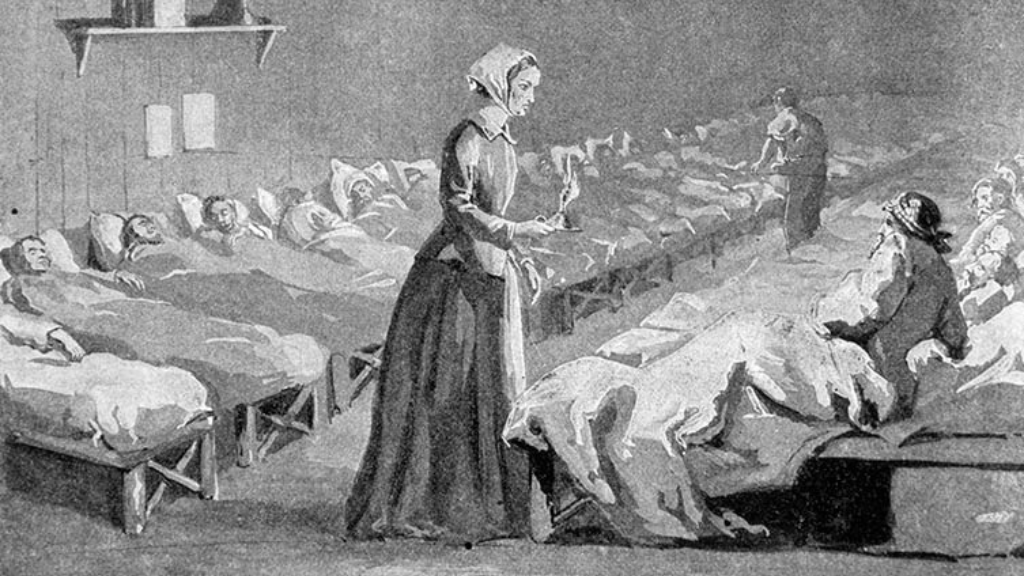
Photo: © Fortnum & Mason 2025
Beef tea was a concentrated meat broth — the forerunner of modern “bouillon cubes”. It was considered an ideal way to restore strength in the wounded: nourishing, light and quickly effective. Fortnum’s supplied a convenient concentrated version that required only dilution in water.
Later the store frequently found itself at the forefront: during the Napoleonic Wars Fortnum’s supplied officers with dried fruits and spices; in the First World War — soldiers on the Western Front, including Winston Churchill; and during the Second World War it opened a special department for officers and created Service Chocolate in a pink wrapper at the request of the Ministry of Food. Even after damage during the Blitz, production never ceased.
Scotch egg and picnic hampers
Fortnum & Mason claims that it was here, in 1738, that the iconic dish was invented: the Scotch Egg. Located on Piccadilly, the shop was an ideal stop for travellers heading west, and from the outset set itself the goal of producing food convenient for the road. Hence the brilliant idea: wrap a hard-boiled egg in seasoned meat, coat it in breadcrumbs and deep-fry it. Simple, hearty and portable, the dish quickly became a hit and then a classic of British cuisine.
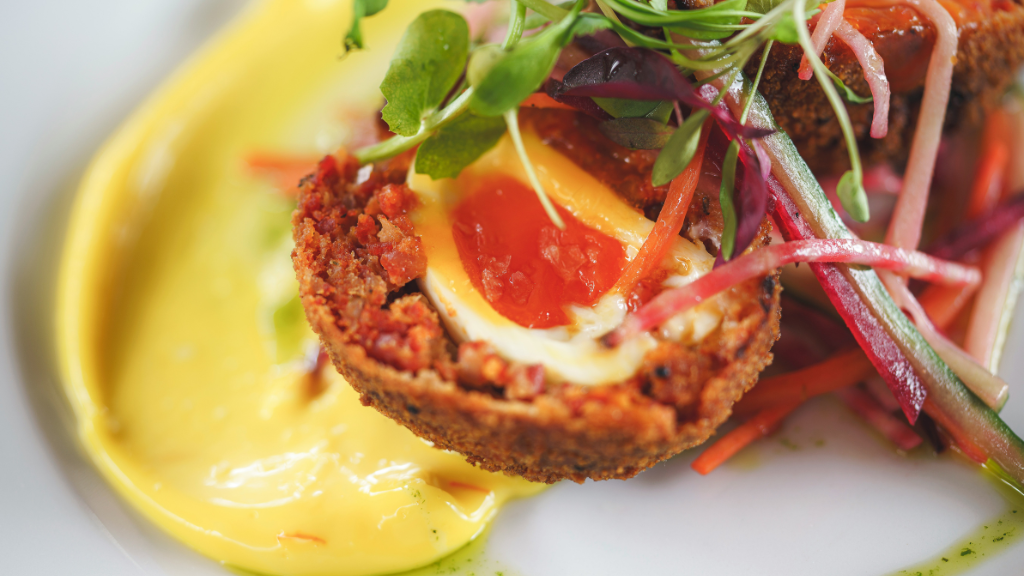
Photo: Sebastian Coman Photography / Unsplash
The original recipe featured a young hen’s egg surrounded by seasoned mince with salt, pepper and nutmeg, then dipped in egg and breadcrumbs. Over time Fortnum’s experimented repeatedly: introducing versions with black pudding, vegetarian options, quail and goose eggs, and once even an Easter chocolate variant made of praline and orange ganache, covered in hazelnuts and cocoa.
Read also: The love and hate story of artist Pablo Picasso and Ballets Russes dancer Olga Khokhlova
From the same tradition of British pleasures “to go” emerged another legend of Fortnum & Mason — the celebrated picnic hampers. They appeared in the eighteenth century and swiftly became an integral part of English travel culture. They were packed with fine foods, tea, china and silver — everything needed for a picnic or a long journey in the spirit of Victorian London. Over time the hampers transformed into a signature Fortnum’s gift: today they are ordered for Christmas, coronations and royal jubilees, and each basket remains a symbol of British hospitality and gastronomic generosity.
- Photo: Afisha.London
- Photo: Afisha.London
Magical windows
The Christmas display windows of Fortnum & Mason are an annual tradition watched by millions. Leading British designers work on their décor, including the studio Kristjana S. Williams, which turns illustrations into three-dimensional festive scenes. In 2025 the theme of the windows is a carnival of colours and magical nature: unicorns dance under disco balls, narwhals leap through waves, and two love-struck birds shimmer against fireworks.
When the chime of Fortnum’s clock resounds on Piccadilly, crowds freeze in front of the glowing windows. Light, music and motion create a distinctive festive atmosphere — that very London Christmas magic in which elegance, fantasy and British tradition mingle.
- Photo: Afisha.London
- Photo: Afisha.London
Architecture of the future
Recently Fortnum & Mason unveiled its first major architectural project in twenty years — a new spiral staircase created in collaboration with Ben Pentreath Studio. Its elegant double-spiral form, inspired by Leonardo da Vinci’s drawings, connects three floors of the store, uniting past and future.
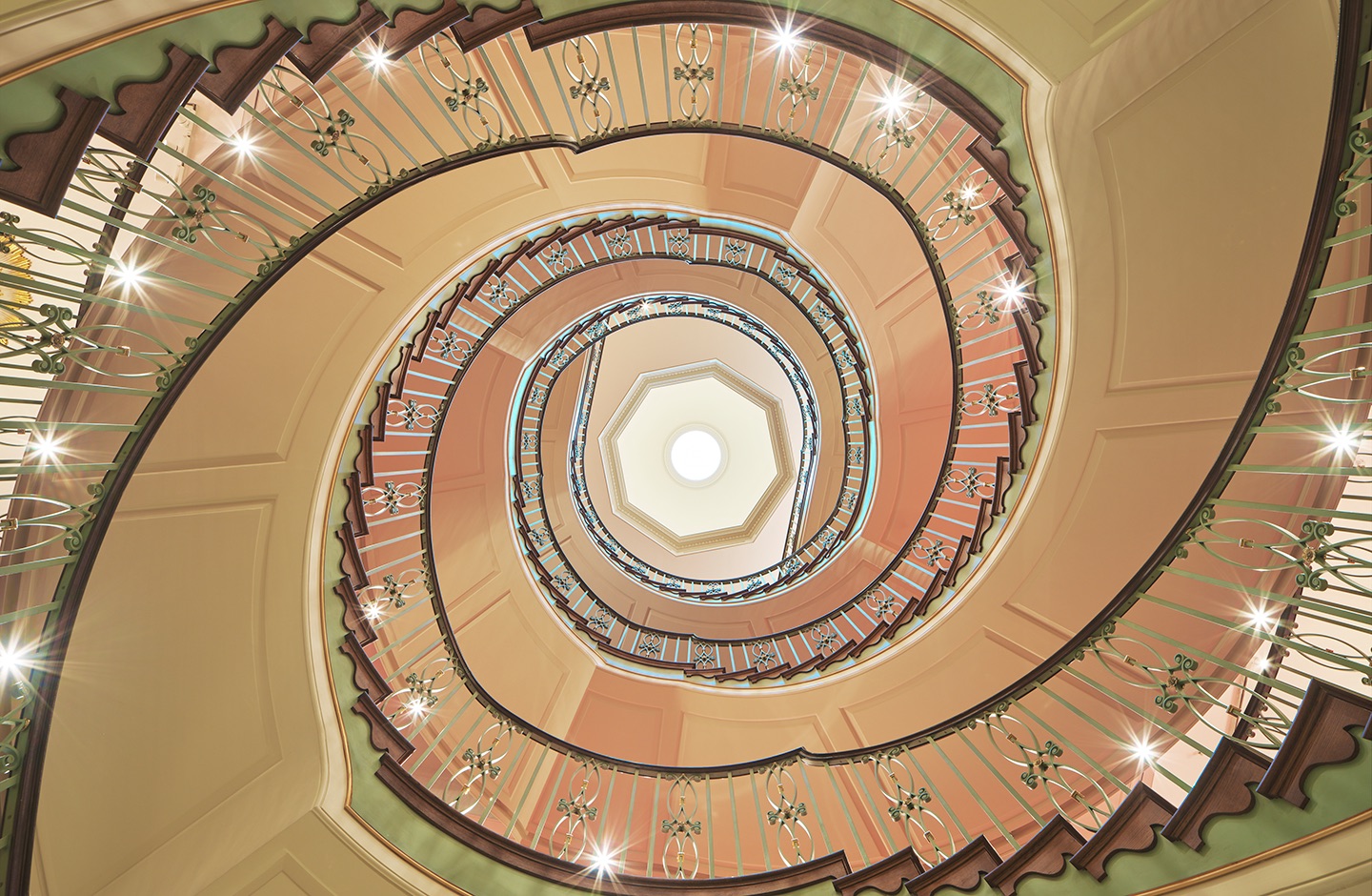
Photo: © Fortnum & Mason 2025
The staircase was crafted by hand in Sussex: more than three thousand individually wrought details, 132 steps, 340 metres of illuminated handrails, hundreds of polished brass rosettes — all embody Fortnum’s artisan ethos and its love of perfection.
Fortnum & Mason remains more than a store — it is a living symbol of British culture: a place where history, craftsmanship and imagination converge in one space. From beef tea of the Crimean War era to royal tea blends and windows that transform Piccadilly into a theatre of wonders — everything here is made with a love for detail and respect for tradition. And, as three centuries ago, every visit to Fortnum’s remains a small journey into the very essence of British taste.
Cover photo: Samuel Regan-Asante / Unsplash
Read also:
Great British contemporaries: Stephen Fry
The London Christmas Guide 2025: shows, skating and sparkling nights
November in London: concerts, festivals, exhibitions and the first lights of Christmas
SUBSCRIBE
Receive our digest once a week with quality Russian events and articles



